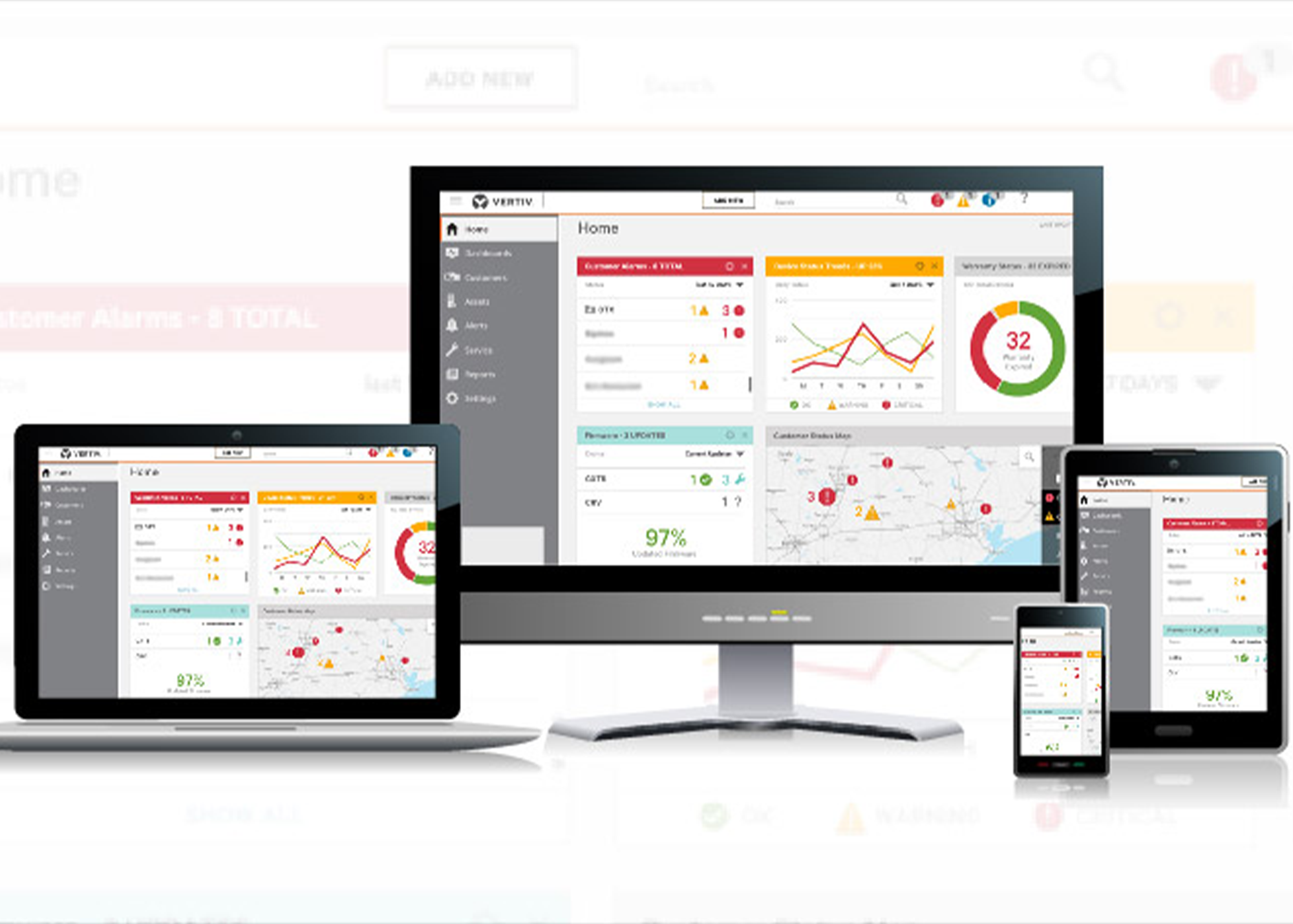Networking
Networking
News
Singtel and Ericsson to deploy a new 5G technology
Singtel today announced that it is the first in the world to commercially deploy a new 5G capability – Ericsson’s Automated Radio Resource Partitioning (ARRP).
Unlike previous iterations of network slicing that require customers to pre-define their network needs, the new software solution intelligently allocates network resources to meet varying workloads of enterprises and consumer applications, thereby overcoming issues of over- or under-provisioning and eliminating the risk of compromising network performance. ARRP also simplifies the complexity of network management for enterprise customers and is particularly beneficial for mission-critical applications where demands on the network frequently changes abruptly.
ARRP was deployed at the 2024 Singapore Grand Prix Formula 1 event, held over the weekend, as part of Singtel’s 5G Express Pass offering to consumers. This ensured subscribers enjoyed priority network resources and twice the speed, which enabled them to livestream the race and festivities, share content on social media in real-time, and call for ride-hailing services in a congested environment where total attendance exceeded 250,000 spectators.
Ng Tian Chong, CEO, Singtel Singapore, says, “With ARRP, businesses only need to specify their desired outcomes and the software handles the rest. Even with no knowledge of network resourcing and management, businesses can tap on the new capabilities of 5G and network slicing. This paves the way for businesses to explore new use cases in dynamic environments like in homeland security, healthcare, smart manufacturing and even high traffic consumer events. We welcome enterprises to test the technology so they can experience the ease with which they can manage their network requirements to support their business needs.”
Daniel Ode, Head of Ericsson Singapore, Philippines and Brunei, adds, “Ericsson’s Automated Radio Resource Partitioning solution enables Singtel to define and set measurable objectives or ‘intents’ for its enterprise customers, pertaining to uplink or downlink throughputs, along with a maximum resource utilisation in the network. Amidst challenges from increasing complexity, leveraging automation allows our customers to deliver scalable and sustainable service differentiation for superior network experiences."
Singtel has been consistently unlocking new features from 5G technology to help businesses improve their business operations and enable the development of innovative applications.
Since achieving nationwide 5G coverage in 2022, it has developed technologies like network slicing that dedicates network resources for specific uses, even up to the mobile application level. 5G is also the foundation for Singtel’s recently launched national quantum-safe network (QSN). Southeast Asia’s first, the QSN enables enterprises to secure their communications across the island and extends quantum-safe security to new use cases and applications such as identity, mobility and authentication services. The network is currently open for enterprises to learn more about quantum technology before adoption.
For more from Singtel, click here.
Simon Rowley - 23 September 2024
Networking
News
Project to deliver low latency in home broadband networks
A new project to aid the delivery of low latency in home broadband networks to improve the user experience of interactive applications has been launched by Broadband Forum.
The global standards body will show operators and service providers how to implement Low Latency, Low Loss and Scalable Throughput (L4S) technology, which was specified by the Internet Engineering Task Force (IETF) last year, in response to demands of new applications that require low and predictable latency for the best user experience.
L4S will enable service providers to offer services to subscribers that can support applications with latency and capacity demands at the same time and at the same network bottleneck. Offering network congestion control that was not previously available for latency sensitive applications, L4S can ensure better user experiences for cloud gaming, video conferencing, extended reality (XR) and more.
Jonathan Newton, Vodafone and Access and Transport Architecture Work Area Director at Broadband Forum, comments, “We’re keenly aware that low and stable latency, along with high throughput, is fundamental to broadband performance for many interactive applications used in the home. This is especially true to ensure immersive experiences for applications like cloud gaming, and we’re confident this project will help providers deliver new benefits to pass onto their customers.
“Broadband Forum is uniquely positioned to define how to implement L4S capability into a broadband network as a number of key congestion points are in our scope of work, and we look forward to supporting the industry tackle a key pain-point for modern network applications.”
As L4S does not require implementation across the whole network to start to deliver benefits, Broadband Forum’s project will support phased implementations of the technology that focus on the most beneficial parts of the network first, on the journey to a full end-to-end support.
“As trials and real-world implementations and deployments continue to ramp up in the likes of DOCSIS networks and a range of Apple operating software, Broadband Forum’s new project will build on the IETF standard to ensure ultra-low latency can be ensured in broadband networks,” says Craig Thomas, CEO at Broadband Forum. “In turn, software developers do not need to rewrite their own networking code to support L4S and application providers can continue to develop and introduce apps that require low latency in combination with high throughput.”
L4S improves end-to-end performance by introducing immediate congestion feedback from network bottlenecks as soon as data packets begin to queue. This, combined with a scalable congestion control scheme on the sending hosts (the computers and devices sending the data), helps support high throughput and low latency even during network congestion.
The Application of L4S to Broadband Networks project, from Broadband Forum’s Access and Transport Architecture (ATA) Work Area, will be responsible for defining how to apply L4S to a broadband network, with considerations on implementation and introduction strategies.
For more from Broadband Forum, click here.
Simon Rowley - 19 September 2024
Networking
News
Wi-Fi
Spirent expands Wi-Fi testing solutions
Spirent Communications, a provider of test and assurance solutions for next-generation devices and networks, has announced significant enhancements to its Octobox Wi-Fi testing solutions, designed to address the evolving needs of Internet Service Providers (ISPs) and equipment manufacturers.
As Wi-Fi continues its rapid evolution, driven by the increasing number of connected devices and the rollout of Wi-Fi 7, Spirent's advanced testing platforms are poised to ensure reliable and high-performance connectivity for consumers and enterprises alike.
A key enhancement to the Octobox portfolio is the new pre-configured automated testbeds specifically designed to comprehensively test access points, devices, and mesh systems for Wi-Fi 7. Building upon earlier customisable configurations, Octobox has developed the world's first isolated-chamber testbed designed specifically for testing, validating, and optimising the performance of consumer endpoint devices connected to Wi-Fi 7, which revolutionises testing for a range of devices - from phones and VR goggles to refrigerators and drones.
In addition, Spirent has designed a configuration specific to testing mesh networks, an important trend in Wi-Fi technology. Mesh backhaul testing is a specific area where the benefits of Wi-Fi 7, such as faster backhaul links, can be particularly advantageous. The testing solution ensures that as more devices connect and operate within a mesh network, the overall performance remains robust and reliable. This includes testing for throughput and resilience, which are critical for ensuring that mesh networks can handle the demands of multiple devices and provide seamless coverage.
"With the rapid evolution of Wi-Fi technology, our advanced testing solutions ensure that ISPs can deliver robust, high-performance connectivity across complex mesh networks and a growing number of end devices,” says James Kimery, Vice President of Product Management with Spirent’s Test & Assurance business. “By addressing the unique challenges of Wi-Fi 7 for each key focus area, we empower ISPs to provide seamless, reliable service while reducing support costs and enhancing customer satisfaction."
Spirent states that Octobox is the only platform that can comprehensively test stringent Wi-Fi 7 standards by characterising the unique capabilities of Wi-Fi 7 now and in the future as the requirements and related test cases evolve. With a modular design for easy upgrades and the ability emulate multiple devices or stations, Octobox provides a controlled environment to create real-world conditions in a repeatable manner, combining high performance instrumentation and analysis capabilities with the most sophisticated automation software. Octobox simplifies Wi-Fi 7 test set-up, reduces testing duration, and enhances repeatability, resulting in actionable business outcomes.
For more from Spirent, click here.
Simon Rowley - 18 September 2024
Networking
News
Telecoms
GSMA launches AI maturity roadmap
The GSMA today launched a first industry-wide Responsible AI (RAI) Maturity Roadmap to provide telecoms operators with the tools and guidance to test and assess their responsible use of the technology.
Recognising that the overall opportunity derived from the expanded use of AI within the telecoms sector is estimated by McKinsey to be as high as $680 billion over the next 15-20 years, the GSMA is uniting the industry in using the technology ethically and responsibly – the first time a whole sector has committed to a common approach to AI.
The roadmap, developed based on insights by McKinsey, will allow telecoms organisations to assess where they currently stand in terms of their existing maturity in using AI responsibly against where they want to go, i.e. their ambitions and needs, and provide clear guidance and measurement tools to help them get there, while ensuring industry-wide best practice in the responsible use of the technology.
Its development follows the well-established commitments of many mobile network operators (MNOs) to ensure the exploration and integration of AI within their work has been and is done in ethical and responsible ways.
Following extensive industry consultation, the GSMA has taken these approaches and combined them with existing global regulations, recommendations and standards from international organisations including the OECD, and the UNESCO Recommendation on the Ethics of AI to create a roadmap for the whole industry to align on the use of RAI.
Eighteen MNOs have already committed to the roadmap as a way of tracking, maintaining and improving their responsible use of AI following significant industry involvement in the consultation and development process.
Best-practice principles
The RAI Maturity Roadmap is underpinned by five core underlying dimensions: the vision, values and strategic goals of an organisation; its operating model and how to maintain AI governance across all operations; technical controls aligned with regulatory requirements; collaboration with third-party ecosystems; as well as corporate change management and communication strategies.
For each of these dimensions, the roadmap will guide organisations to take the appropriate steps to use AI responsibly relative to their level of maturity.
It also builds on well-established best-practice principles, including: fairness; human agency and oversight; privacy and security; safety and robustness; transparency; accountability; and environmental impact.
By providing greater clarity and a common approach to the responsible use of AI, the GSMA’s industry roadmap will give MNOs the confidence to commit to its adoption in the knowledge they are doing so in established, agreed and ethical ways, and therefore unlock the technology’s full value more quickly.
Mats Granryd, Director General of the GSMA, says, “The transformative potential of AI has long been apparent, but its integration in our work and our lives must be done in a responsible and transparent way for it to be truly effective and sustainable. This roadmap will now empower more MNOs to embrace AI in the knowledge they, in line with the whole sector, are doing so responsibly and ethically.
“Responsible AI is the right way to explore and unlock the many opportunities the technology presents, and the telecoms industry is proud to lead the way as the first sector to commit to this approach – we hope others will follow our example.”
José María Álvarez-Pallete López, GSMA Board Chair and Chairman & CEO of Telefónica, adds, “The speed with which AI has now become a central part of tech and telecoms operations demonstrates its power and undoubted value, but also the risks we must consider as an industry and the need to include ethics at the heart of AI to prevent its uncontrolled development. It is crucial for us all to ensure responsible guidelines for the use of AI are implemented now, and it is great to see the telecoms industry leading the way on this with the GSMA’s new roadmap.”
William Woo, Singtel’s Group Chief Information Officer and Group Chief Digital Officer, comments, "As a leading digital services provider, the Singtel Group is committed to empowering people and businesses and creating a more sustainable future for all. To ensure AI is developed and used ethically and responsibly, we have collaborated with GSMA to develop the Responsible AI Maturity roadmap which provides the industry with a clear framework for action. This roadmap also guides our own efforts to enhance our responsible AI practices, so enterprises and consumers can benefit from the value creation potential of this next-generation technology safely."
The full list of MNOs already signed up to the GSMA Responsible AI Maturity Roadmap is: Axiata, BT, Deutsche Telekom, Du UEA, E&, Globe, MTN, Orange, Singtel, stc, Telefónica, Telenor, Telia, Telstra, Turkcell, TIM, True, and Vodafone.
Simon Rowley - 17 September 2024
Cloud
Networking
News
Product
VIAVI introduces VAMOS automation platform
VIAVI Solutions has introduced the VIAVI Automation Management and Orchestration System (VAMOS), an intelligent automation platform that incorporates AI/ML capabilities to enable wireless and cloud service providers, network equipment manufacturers and their ecosystems to reduce operational expenses and accelerate time-to-market.
The complexity of network architectures continues to increase, as operators and equipment manufacturers investigate the next generation of technology, migrate to the cloud, and leverage AI and ML. Continuous Testing (CT) becomes ever more prevalent to provide a unifying perspective on real-world performance. However, labs are confronting the dual challenges of more tests and limited headcount. Automation has become a crucial way for them to manage the complexity, scheduling and manpower demands of CT, allowing technicians to efficiently power through hundreds of test cases, and to focus on higher-order analysis and problem solving.
VIAVI has developed VAMOS as part of its NITRO Wireless portfolio to automate test campaigns and their execution in one centralised cloud-based, Lab-as-a-Service platform. Built-in AI and ML capabilities enable test optimisation and faster response times.
VAMOS’s customisable workspaces and configurations streamline the testing process across organisations and lab locations. Shared tool testbeds and individual sandboxes accommodate multiple test needs while the platform’s robust analytics and reporting help maximise test resource utilisation and boost test accuracy.
“As VIAVI works with leading labs around the globe to integrate wireless, cloud and AI, the need for automation and orchestration has never been clearer,” says Ian Langley, Senior Vice President, Wireless Business Unit, VIAVI. “In initial implementations at major labs, VAMOS has already demonstrated significant reductions in cost per test-hour and increases in hardware utilisation.”
In addition to providing a standalone solution to schedule and run test campaigns based on VIAVI’s NITRO Wireless portfolio, VAMOS can be integrated with a third-party automation framework, allowing it to interact with a wider range of products and existing test environments. Connection is available via both software and hardware.
VAMOS will be integrated into the VIAVI Automated Lab-as-a-Service for Open RAN (VALOR) for the lab’s on-demand, cloud-based testing. VALOR is designed to manage and support 5G and Open RAN deployments that would benefit from access to tools and expert staff with a minimal ramp-up time. The project is funded by the Public Wireless Supply Chain Innovation Fund.
For more from VIAVI Solutions, click here.
Simon Rowley - 16 September 2024
Networking
News
New broadband network use cases to be showcased
An array of network innovations set to aid operators in their move to services-led broadband will be demonstrated for the first time at Network X.
The Broadband Forum's innovation demonstrations will showcase several real-world use cases that are ensuring Quality of Experience (QoE), improving network efficiency and performance, and accelerating time-to-market of new services for broadband service providers at the event on 8-10 October.
Two first-time use cases enabled by the Forum’s flagship standards include the automated deployment of best practices and applications for greater troubleshooting of equipment in the access network and 5G Wireless-Wireline converged Residential Gateway transformation. Other demonstrations include use cases for network equipment interoperability, smart network traffic steering, fixed access network sharing and smart home application management.
“The expansion beyond the CloudCO-centric demos shown last year to the wider pool of our work and standards represents the breadth of progress made by Broadband Forum and its members over the past year as we continue our journey towards services-led broadband,” says Lincoln Lavoie, UNH-IOL Principal Engineer and Broadband Forum Technical Committee Chair. “Our demonstrations, plugfests and certification programs are fundamental in making the first connection point and bringing together the industry’s key players, architectures, and users that drive the interoperable, open broadband ecosystem.”
Broadband Forum members will participate in and support the demonstrations. The members will also come together for BASe workshops to explore the technologies, innovations, and broadband standards that are enabling operators to seamlessly manage the connected home, differentiate their services and deliver greater value beyond providing basic connectivity, unlocking new revenue.
“These demonstrations not only signify the industry’s strategic transition away from connectivity-driven models into the application age of broadband, but they provide a real-life proof-of-success and the confidence the industry needs to adopt Broadband Forum’s standards,” notes Manuel Paul, President of the Board of Directors at Broadband Forum and Squad Lead Network Convergence at Deutsche Telekom.
“Open standards and software are paramount in providing the industry with new insights, innovations and interoperable, holistic solutions that allow service providers to adopt a services-led approach and offer more differentiated and customised packages to each of their subscribers.”
The demonstrations will encompass Broadband Forum standards, Open Broadband projects, commercial solutions, and open source software.
To see the live demos and BASe workshops, visit the Broadband Forum Member Pavilion – Stand C46 at Network X on October 8-10 in Paris, France.
For more from Broadband Forum, click here.
Simon Rowley - 16 September 2024
Data
Data Centres
Networking
News
Security
UK data centres designated Critical National Infrastructure
The UK government has made the country’s data centres Critical National Infrastructure to protect the country’s data against IT outages, cyber attacks and environmental emergencies.
It’s the first Critical National Infrastructure designation since 2015, putting data centres alongside water, energy and emergency services systems, giving them greater government support when recovering from critical incidents.
As part of the designation, a dedicated CNI data infrastructure team of senior government officials will be formed to monitor for potential threats, working closely with agencies such as the National Cyber Security Centre and emergency services to ensure data, from photos to NHS records, is protected.
Jennifer Holmes, CCO at LINX, comments, “Data and network traffic is growing exponentially as people and businesses rely more and more on digital services. Here at LINX we have been classed as critical national infrastructure in the UK for many years and wholly support this recognition for our data centres, many of whom are valuable partners of ours.
“As data continues to scale, resilient infrastructure becomes increasingly important to ensure uninterrupted data flow and protect against downtime, which can prove costly across many sectors.
“This move should form part of a wider internet redundancy strategy, creating protocols and fail-safes to reroute network traffic in the event of an outage. Threats such as cyber attacks or extreme weather conditions are a case of when, not if, so it’s vital to have redundancies in place to not only protect data centres, but ensure networks stay online."
With the CNI designation, the government will work to build contingency plans to mitigate risks and damage caused in the event of an attack against a data centre. This will work in tandem with the proposed Cyber Security and Resilience Bill to strengthen the UK’s cyber defences.
Technology Secretary Peter Kyle says, “Data centres are the engines of modern life, they power the digital economy and keep our most personal information safe. Bringing data centres into the Critical National Infrastructure regime will allow better coordination and cooperation with the government against cyber criminals and unexpected events.”
It follows the Chancellor’s announcement of an £8 billion investment in the UK data centre market, aiming to create 14,000 jobs and spark economic growth.
The UK is currently home to the highest number of data centres in Western Europe, becoming an increasingly valuable driver of the UK economy.
Carly Weller - 12 September 2024
Cloud
Data Centres
Networking
Juniper revolutionises data centre assurance
Juniper Networks has announced several new and unique enhancements to its data centre assurance capabilities, driving exceptional user experiences through increased network visibility, analysis and automation.
The Juniper data centre networking solution now incorporates new cloud-hosted services that leverage AI for networking to deliver enhanced insights into application behaviours, both traditional and emerging AI workloads, for ongoing optimisation and rapid troubleshooting. In addition, Juniper has added new capabilities for analysing and validating data centre operations plus even richer telemetry data which, alongside other data centre assurance capabilities, help to reduce deployment times by up to 85% and cut OPEX costs by up to 90% in some instances.
Juniper’s data centre networking solution consists of QFX Series Switches, EX Series Switches, PTX Series Routers, ACX Series Routers and high performance SRX Series Firewalls managed via Juniper Apstra data centre assurance software and the Marvis Virtual Network Assistant (VNA). As a key part of the Juniper AI-Native Networking Platform, the solution leverages the right data to deliver the right real-time responses for highly reliable data centre networking. This enables unique capabilities, such as multivendor intent-based networking and switch management, proactive AIOps and a GenAI conversational interface for knowledgebase queries. From traditional data centres to new data centres for AI training, inference and storage clusters, Juniper combines exceptional performance with best-in-class flexibility and operational simplicity, plus switch management, proactive AIOps and a GenAI conversational interface for knowledgebase queries.
To simplify data centre operations and maximise network performance even further, Juniper has added new and unique software enhancements, which include:
New AI-Native cloud services that improve application visibility and assurance to optimise performance and lower mean-time-to-resolution (MTTR) Juniper is launching two new data centre cloud services, Service Awareness and Impact Analysis, to complement the Marvis VNA for Data Center AI-Native cloud service announced earlier this year.
Service Awareness leverages AIOps to add application and service data to the Juniper network knowledge graph, enabling greater application-to-network visibility. Service Awareness increases the understanding of where apps and services attach, how they communicate across the network, and what resources they consume, providing direct insights and supporting additional assurance capabilities such as Impact Analysis.
Impact Analysis builds on Service Awareness to enable faster troubleshooting and issue resolution and improved application assurance. AI/ML maps identified issues to impacts, providing a clear picture of which issues are responsible for applicationimpacts and which are unrelated. State comparison between different times improves identification and resolution of transient issues.
Service Awareness and Impact Analysis are now available in the Juniper Apstra Premium license tier at no extra charge. Marvis VNA for Data Center, the initial application in the Juniper Apstra Cloud Services suite, continues to be available in all three Juniper Apstra license tiers (Standard, Advanced, Premium) at no extra charge. All three data centre cloud services are built on Juniper’s microservices cloud architecture, which maximises scale, resiliency and performance.
Continued investment in intent-based networking improves the operator experience and further optimises application performance. The latest release of Juniper Apstra (version 5.0), which is a seamless upgrade for current users, builds on this leadership by adding over 100 new features focused on simplifying data centre operations even further.
For more from Juniper, click here.
Carly Weller - 12 September 2024
Data Centres
Networking
LINX Nairobi network expands to PAIX Data Centres Kenya
The London Internet Exchange (LINX) is extending its African interconnection platform to PAIX Data Centres in Nairobi, following demand from the local networking community.
Networks located at the PAIX facility in Nairobi are soon to be just a single cross connect away from peering opportunities with any network present at LINX Nairobi, from global content networks like Meta to local ISPs such as ICON Fiber, Mtaani Telecom, Mymanga Networks and PepeaNet.
LINX Nairobi has a fully interconnected and dual fibre infrastructure between the data centre sites for full resilience and redundancy. The addition of PAIX will enhance the LINX fabric to a four-site interconnection hub and the installation work is being prepared and looking to go live in the coming weeks.
Launched back in November 2023, the new Internet Exchange Point (IXP) is going from strength to strength, with a strong community of local Internet Service Providers (ISPs), global content networks and strategic partners already interconnected, and traffic starting to build. The team at LINX have spent a lot of time with the local engineering community and, following interest from key networks located at PAIX, it was decided that the infrastructure needed to grow – only nine months after launch.
PAIX Nairobi NBO-1 is located at the Britam Tower in Upper Hill, Nairobi, the central business district and a known key financial hub for East and Central Africa.
Emmanuel Makina, Sales Manager of PAIX Data Centres says, “With our cloud- and carrier-neutral data centre located in the centre of the business district, we host communities of interest for the financial and content industries, so that includes financial services, advertising, broadcasting and entertainment companies.
"The customers that host their mission critical equipment in our facility have a requirement to be online 24x7 in today’s digital economy. They all benefit from being able to connect to multiple networks, easily scale their bandwidth, reduce their connectivity costs, and have the lowest latency to their partners.
"The PAIX facility is a natural communications hub for Nairobi, in a very central location in Upper Hill and next to Britam Tower where our customers can collocate their antennas for wireless connectivity to all parts of the city.”
Jennifer Holmes, CCO for LINX comments, “We didn’t expect to be expanding the LINX Nairobi network this soon, but we like to pride ourselves in our commitment to the local community. They said, we listened. By expanding the peering opportunities to the customers at PAIX we are adding value to the entire LINX Nairobi community and prospective new local and global networks who we are in talks with.”
Carly Weller - 11 September 2024
Cloud
Data Centres
Networking
Vertiv launches cloud-based fleet management
As AI workloads pivot to the network edge, the need for enhanced visibility at these remote data centre sites has become increasingly apparent. Recognising this, Vertiv has introduced Vertiv Environet Connect, a cloud-connected and web-based fleet management and monitoring solution. It features a device-agnostic interface that can handle diverse data centre infrastructure equipment across multiple locations, regardless of the manufacturer. Environet Connect is now available in Europe, Middle East and Africa (EMEA) and in North America.
Environet Connect speeds the deployment of remote Vertiv equipment and improves its health and efficiency through mass provisioning and firmware updates of network management cards. The system's monitoring capability enhances the oversight of critical infrastructure and provides customisable and configurable alarm notifications. Monitoring covers UPS systems, rack power distribution units (PDUs), generators, and thermal units.
"Edge deployments are growing rapidly and may soon be driven by real-world AI applications such as large language models, predictive analytics, and autonomous vehicles. Although these applications currently operate in data centres, they may quickly shift to the edge to reduce latency and avoid processing bottlenecks," says Wesley Lim, vice president of software and digital solutions for Vertiv. "Implementing a secure, user-friendly and web-accessible monitoring solution like Environet Connect would enhance operational visibility and maximise uptime for remote environments."
Environet Connect is accessible to direct customers and channel-managed service provider (MSP) partners. It accommodates all user types and is designed for multi-tenancy, simplifying the process for partners and customers.
Vertiv offers a series of services to enhance the Environet Connect user experience, with software training, customer help desk and asset management. The services include tiered levels, encompassing technical support, firmware updates, device provisioning and remote monitoring.
Vertiv recently announced its end-to-end portfolio for High-Performance Compute (HPC) and AI deployments, Vertiv 360AI. The solutions include power, cooling, enclosures, end-to-end lifecycle services and digitised management. Vertiv Environet Connect allows a common interface for the solutions within the AI ecosystem.
For more from Vertiv, click here.
Carly Weller - 10 September 2024

Head office & Accounts:
Suite 14, 6-8 Revenge Road, Lordswood
Kent ME5 8UD
T: +44 (0)1634 673163
F: +44 (0)1634 673173









